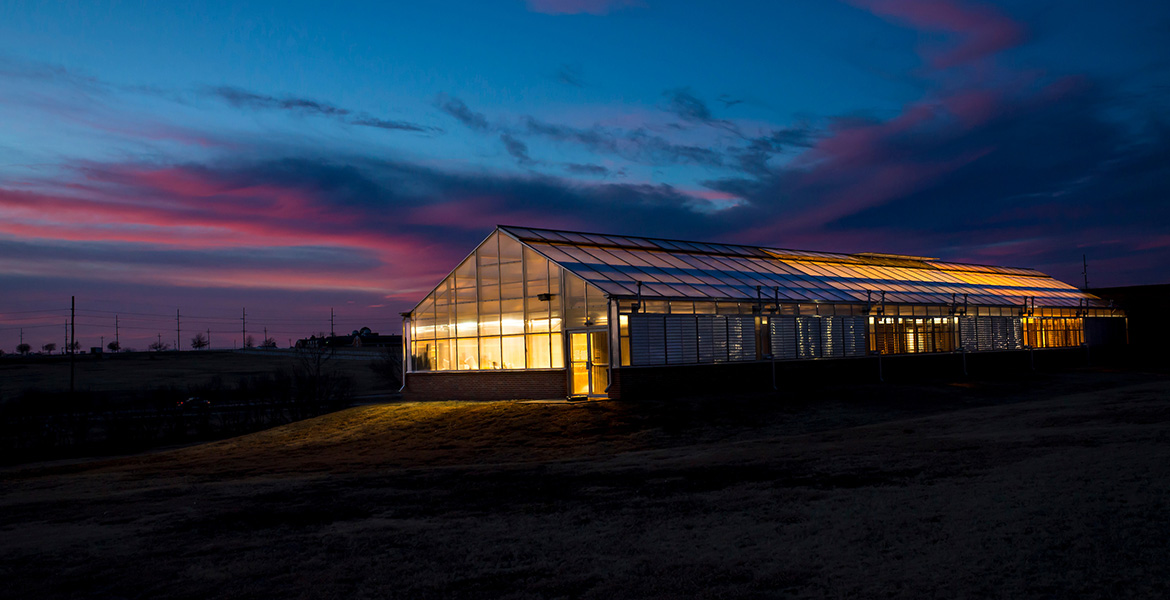
Undergraduate Research Program elevates OSU’s agriculture programs
Thursday, April 19, 2018
Graduate students across the globe conduct research, compile their findings, crunch the data and write their papers.
Oftentimes, before they take that plunge into the research world, they do not understand what they are getting into. This is true, too, for students at Oklahoma State University.
However, thanks to a collaboration between OSU’s College of Agricultural Sciences and Natural Resources and the Oklahoma Agricultural Experiment Station, undergraduate students can get a taste of research before committing the next couple years of their lives to science.
“You don’t see two different agencies partnering to do this very often,” said Karen Hickman, assistant dean for academic programs and professor in OSU’s Department of Natural Resource Ecology and Management. “The Undergraduate Research Program was started by CASNR and OAES to help faculty who are spending a lot of time mentoring undergraduate research scholars, but they were doing it first without any help.”
Hickman talked about how historically undergraduate students would approach faculty members with research ideas, which sparked the interest of the faculty member. The only option for them to conduct the project was for the faculty to pay for it out of pocket.
“Students maybe didn’t have enough supplies for their research projects and faculty would try and cover it with some other funds. The program was a need,” Hickman said. “Sometimes it can help fund the students involved in research, or pay to go to professional meetings and conferences.”
For nearly a decade, the Undergraduate Research Program has provided funding for this wanted and needed additional research.
“Undergraduates have such enthusiasm and curiosity about topics covered in classrooms,” said Carol Jones, professor in OSU’s Department of Biosystems and Agricultural Engineering. “This creativity turns into successful research ideas. Not only do the undergraduates get to dig deeper into an idea or topic of interest, they also learn the basics of research methods, experimental design and even budget management.”
Nearly 30 undergraduate students, partnered with faculty across CASNR, are conducting research this academic year.
“We have a lot of faculty that really does a lot of amazing research with undergrads. What you do as faculty with these undergraduate researchers is important,” Hickman said. “The faculty is training the next generation of scientists. You’re really contributing to a very successful pool of graduate program applicants.”
In fact, nearly every one of the students who has participated in the program under Hickman has gone on to graduate school.
“Mentoring undergraduate research is considered highly impactful teaching and is a great example of experiential learning,” she said. “This is really for those students who may be unsure whether they can or would even like to conduct research in graduate school.”
Participating faculty members appreciate the program and understand the many good outcomes it has and will continue to provide.
“The research support helps me to give more opportunities for undergraduate students to conduct cutting-edge research and to work with graduate students and faculty. Several of the undergraduate students participated in this program are currently pursuing graduate or professional studies, including in my lab,” said Ranjith Ramanathan, assistant professor in OSU’s Department of Animal Science. “Further, this program is a great example for commitment from the OAES/CASNR for undergraduate research.”
It is not just the undergraduate research scholars and faculty who benefit from this program, but graduate students come out on top, too.
“Many times the faculty also connects them with a graduate student who was doing a project and if we added just a little bit more, their project went from good to great,” Hickman said. “That little bit more was just beyond their ability or they just didn’t physically have the time to do it. The grad students get to mentor them and the undergraduate gets a taste of it.”
Story by Sean Hubbard
